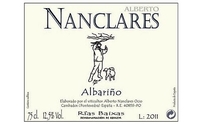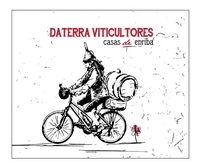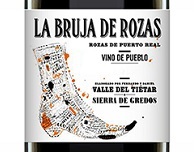|
|
 |

Rioja is typically at the forefront of Spanish wine understanding and sales. However, I'd like to cast the net further afield and explore a few regions and producers that are awakening Spain’s wine industry. I've rounded up a few of my favorite emerging regions, bottles, and winemakers, as the fun is not only selecting the style of wine you like drinking but also the names you like to drink.
Let's get started in Galicia, in northwestern Spain, just north of Portugal. It includes five wine appellations (Denominacion de Origen, or D.O.): Rias Baixas, Ribeiro, Ribeira Sacra, Valdeorras, and Monterrei. Galicia was long considered the best white wine region in Spain until war and disease contributed to the decline of winemaking traditions in the area. Fortunately, the last several decades have seen winemakers dedicated to revitalizing the region’s indigenous grapes and organic farming. And, while Galicia is home to many of Spain's finest white wines, there are a handful of young winemakers like Laura Lorenzo retraining old Mencía vines and have found great success with the red variety. Lorenzo started Daterra Viticultores in 2014 out of her desire to keep regional traditions and varieties alive. Her wines are a love letter to the distinct terroir of Galicia.
Other winemakers breathing new life into Galicia include dynamic producers Alberto Nanclares and Silvia Prieto. Nanclares and Prieto make age-worthy, saline-tinged wines, mainly with Albariño from old vines around the village of Cambados. The pair cultivate all vines organically and are making some of the best examples of Albariño out there.
Two hundred miles south of Galicia, one-hour drive west of Madrid in Sierra de Gredos, similarly enticing winemaking takes place with Garnacha. Sierra de Gredos is a mountainous wine-growing region gaining attention due to old Garnacha vines planted at elevations ranging between 600 and 1200 meters. The treasure trove of old vines is drawing in newcomer producers like winemaking duo Fernando Garcia and Daniel Gómez Jiménez-Landi. The pair founded Comando G in the Gredos mountains in 2008. The pair make ethereal Garnacha wines with surprising elegance. These are wines that can provide the foundation for an excellent cellar.
What to Drink:
Nanclares y Prieto, Rias Baixas DO (Galicia, Spain) Albariño “Alberto Nanclares” 2018 ($38, Jose Pastor Selections):  Spanish Albariño at its artisanal best. This saline, citrus-driven Albariño transmits the terroir of Galicia, full of salted lemon, white peach, crushed rocks, and fresh cream flavors. It celebrates racy acidity and textural complexity, and offers a captivating drinking experience. 93 Spanish Albariño at its artisanal best. This saline, citrus-driven Albariño transmits the terroir of Galicia, full of salted lemon, white peach, crushed rocks, and fresh cream flavors. It celebrates racy acidity and textural complexity, and offers a captivating drinking experience. 93
 Laura Lorenzo Daterra Viticultores, Valdeorras (Galicia, Spain) “Casas De Enriba” 2019 ($34, Jose Pastor Selections): This unique 80/20 blend of Mencía and Godello has captivating aromas of subtle but tremendously expressive floral and red fruit notes. It has a medium body, with well-integrated tannins and flavors of red cherry, strawberry, rhubarb, and allspice wrapped in a rustic package with mouthwatering acidity. This wine over-performs for the price. Stock your cellar to ensure you have a bottle or three on hand! 92 Laura Lorenzo Daterra Viticultores, Valdeorras (Galicia, Spain) “Casas De Enriba” 2019 ($34, Jose Pastor Selections): This unique 80/20 blend of Mencía and Godello has captivating aromas of subtle but tremendously expressive floral and red fruit notes. It has a medium body, with well-integrated tannins and flavors of red cherry, strawberry, rhubarb, and allspice wrapped in a rustic package with mouthwatering acidity. This wine over-performs for the price. Stock your cellar to ensure you have a bottle or three on hand! 92
 Comando G, “La Bruja de Rozas,” Vinos de Madrid Garnacha 2019 ($35, European Cellars): The La Bruja de Rozas (The Witch of Rozas) is extraordinarily aromatic and intensely flavorful, with notes of crushed violets, basil, and black pepper that meet a core of densely layered red and black fruits. The wine is bright and lifted and arguably among the best expressions of the variety. 93 Comando G, “La Bruja de Rozas,” Vinos de Madrid Garnacha 2019 ($35, European Cellars): The La Bruja de Rozas (The Witch of Rozas) is extraordinarily aromatic and intensely flavorful, with notes of crushed violets, basil, and black pepper that meet a core of densely layered red and black fruits. The wine is bright and lifted and arguably among the best expressions of the variety. 93
|
 |
|